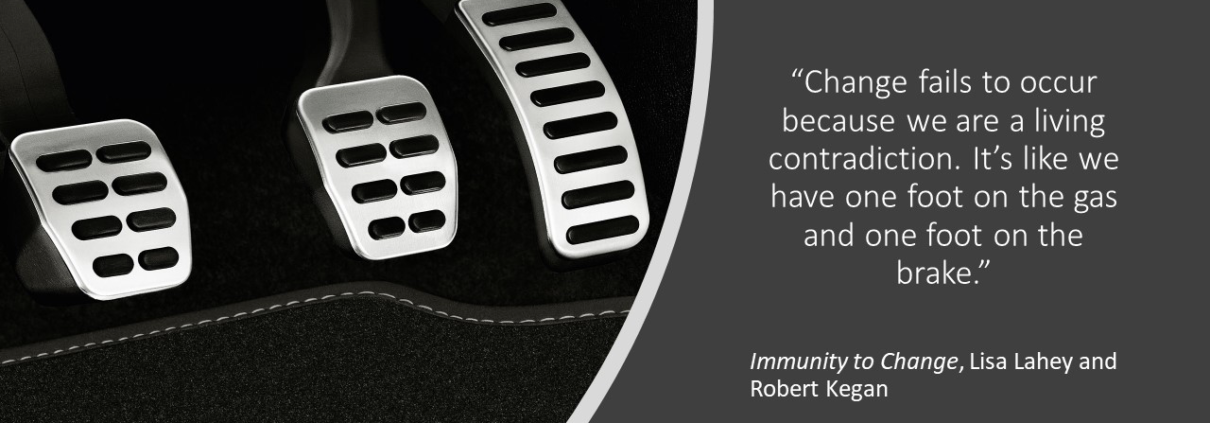Immunity to Change
Why is it that even when we know what to change, we still struggle making the change? Volumes have been written about that subject, and we’re still learning. Change is hard! It’s hard to close the knowing versus doing gap. In their well-researched book Immunity to Change, Kegan and Lahey use the analogy of an immune system to portray what happens when we try to change. Our physical immune system is designed to protect us from sickness and disease. An emotional immune system also tries to protect us from hurt and emotional pain. But when change is involved, it rejects altering behaviors that no longer serve us well, experiences that might enable us to grow, and outdated mindsets that put us at serious risk. Trying to protect us, our emotional immune system tries to maintain the status quo. Psychologist William Perry said, “The two most important things to know about people trying to change: What do they really want? And, What will they do to keep from getting it?” Kegan and Lahey put it this way: “Change does not fail to occur because of insincerity. Change fails to occur because we mean both things. It fails to occur because we are a living contradiction. It’s like we have one foot on the gas and one foot on the brake.” In effect, our emotional immune system becomes a self-protection system artfully designed to keep us “safe” from change.
So, what do we do? Most of us without knowing have hidden commitments that keep us rooted in the present when faced with our goals and intentions for the future. We have a set of (1) actions that we are doing/not doing that compete with the goal; (2) underlying fears or hidden commitments that fuel our behavior; and (3) assumptions (usually not tested) about life and people that inform our beliefs and mindset. Kegan and Lahey suggest conducting an X-ray on each of these areas to better understand what is happening. Where are influences cycling in opposite directions and keeping us stuck? Where is there energy for change that might be trapped against an equally important commitment? What assumptions are driving current behaviors and causing us to work against our goals?
Caution! This is scary! As personal insights come to the surface, often anxiety increases and our emotional self-protection defenses go on high alert. Take your time. Shine a light on what is happening under the surface. Experiment. Challenge assumptions and see what happens. You can always go back to what has worked in the past. My own experience of challenging beliefs and trying on new behaviors has helped me realize that my operating system or way of doing things isn’t always protecting me but sometimes hurting me and my progress. Experimenting with new behaviors for a short time has allowed my defense system to calm down while I realized the benefits of the new way of doing things. When I’ve backed off the brake pedal by challenging what’s holding me back, I’ve accelerated my own change toward what will make me better and more emotionally healthy. Good luck on your journey to change the way you change!



